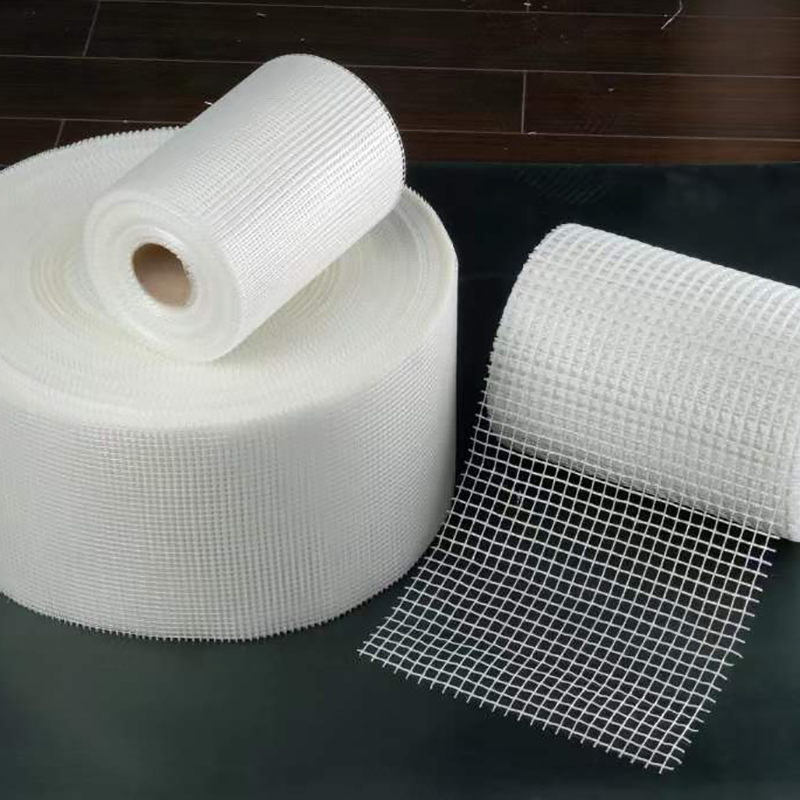The latest breaking updates, delivered straight to your email inbox.
Action News Investigates has learned of a potential health risk in mattresses. Self Adhesive Mesh Drywall Tape Factories

It’s from fiberglass that is used inside some mattresses as a fire retardant.
Action News Investigates: Watch the report in the video above.
Experts say unzipping and washing mattress covers can release shards of fiberglass, causing itchy skin and aggravating breathing disorders.
Laura O’Dell of Monongahela said that’s what happened to her family.
“For a week or so before we discovered it, we were all saying our eyes were burning, and our skin felt itchy,” O’Dell said.
She said the problems began after she removed her daughter's mattress cover to wash it after their dog made a mess. That released tiny fiberglass particles that spread throughout her house.
“And they were everywhere – everywhere. On every surface, all over the floors, all over the desk, the TV stand, everything you can imagine, in the curtains, on our clothes,” O’Dell said.
Asbestos removal contractors wearing protective suits used industrial-strength vacuums with high-efficient filters to clean each room repeatedly.
“We found it on the dressers, found it on the couch, the clothes. Once it got out, it got through the whole house,” said asbestos contractor Josh Logan.
The O'Dells hired another company to run air scrubber machines for a week and a third company to clean their air ducts.
“Only after all of that were we assured that it was safe to be back in our home,” O’Dell said.
Still, they had to throw out thousands of dollars worth of furniture, rugs and clothing. Between that, the cleanup work and nine days in a hotel, O’Dell said, “my tally has us well over $25,000.”
She bought the mattress direct online from Casper Sleep. She's been asking the company to help her cover the cleanup costs.
After Action News Investigates contacted Casper, the company told Laura they wanted to help her.
Casper spokesperson Dana Yacyk released this statement:
“At Casper, customer safety and satisfaction are a top priority. Our products contain materials that ensure we meet federal requirements to address flammability. As such, all Casper mattress models currently being produced include care instructions that direct customers not to remove the outer cover for cleaning. Consumers should spot clean mattress covers with mild detergent without removing the cover. Casper Sleep takes customer complaints seriously and we are working directly with Ms. O’Dell to address and resolve her complaint.”
The Consumer Product Safety Commission allows fiberglass to be used in mattresses and other furniture for fire resistance.
CPSC spokesperson Patty Davis said the agency is “not aware of any health risks from the type of fiberglass used in textiles," including mattresses.
But a study last year by scientists with the California Department of Public Health said fiberglass and similar materials in mattresses are "a potential health risk" if not properly contained. And children are a "special potential risk group, both due to their increased susceptibility and the possibility that children may play or jump on beds."
“Fiberglass can actually be dangerous,” said Dr. Deborah Gentile, an asthma and allergy specialist who is also the medical director at Saint Francis University.
She said more studies need to be done on the health effects of fiberglass in mattresses.
“It's actually an irritant, so if you're breathing it in, it can cause irritation to your upper airways. It can trigger asthma. It can also irritate your skin and cause rashes,” Gentile said.
O’Dell said her daughter's asthma was triggered after they removed the mattress cover.
“Her asthma did become so aggravated that we had to go to the ER one night, and she had to get additional medication,” she said.
Gentile said mattress companies should be transparent about the use of fiberglass.
“Labeling on the mattress, it's not enough to say don't open it. You need to tell them why, what it contains and what could potentially happen,” she said.
The label on O’Dell’s mattress cover said not to remove it, but she said it did not warn of any hazards. And she said the mattress cover had a zipper.
“If the mattress cover should never be removed, explain to me why there's a zipper that goes completely around the circumference of the mattress that makes it removable?” O’Dell said.
Weeks after the cleanup began, O’Dell is still rewashing clothes to try to remove any remaining shards of fiberglass. She warned others not to do what she did.
“It is not worth saving a few bucks trying to clean it because you will open this Pandora's box of chaos,” O’Dell said.
Experts said to check the label on your mattress to see if contains fiberglass. The label should list the materials used on the inner and outer covers. If the label is not clear, experts said to check with the mattress manufacturer.

Standard Fiberglass Mesh Hearst Television participates in various affiliate marketing programs, which means we may get paid commissions on editorially chosen products purchased through our links to retailer sites.